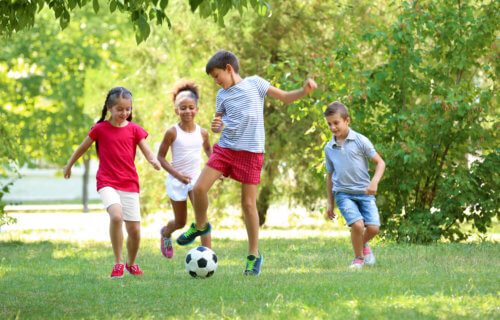ADELAIDE, Australia — New research is highlighting the importance of instilling healthy, active habits among children — but also warns key groups are missing out on the benefits of habitual recreational fitness. Scientists at the University of Adelaide explain that forming long-term recreational exercise habits early in life offers multiple mental and physical health benefits later on in adulthood. However, they add the important caveat that certain groups — including girls and academic high-achievers — are not taking advantage of exercise’s long-term upsides.
Along with young girls and excellent students, researchers found that people with low self-efficacy, reluctant exercisers, and others experiencing socioeconomic disadvantages are most at risk of failing to establish regular exercise patterns during adolescence.
These conclusions come from an examination of data initially gathered as part of the Longitudinal Survey of Australian Youth (LSAY). That survey also showed young Australians, on average, tend to exercise less regularly every year after graduating from high school and moving on to university and work.
“It is well known that sustained regular exercise in young people improves fitness, physical health, self-esteem, reduces distress and sets up long-term patterns that reduce disease risk in adulthood,” says Associate Professor Oliver Schubert from the University of Adelaide’s Adelaide Medical School and the Northern Adelaide Local Health Network, in a media release.
“There seems to be a critical period in people’s teens, around the age of 15, to establish these behaviors.”
While women’s athletics steadily grow more prominent, researchers stress multiple factors still contribute to the gender disparity.
“The disadvantage experienced by females is influenced by reduced opportunity, lower access, and lack of sports diversity, but also divergent parental and cultural expectations, stereotypes, and role models,” explains Dr. Julie Morgan, Clinical Associate Lecturer at the University of Adelaide’s Discipline of Psychiatry and lead author of the study.
“Psychological factors, such as perceived sports competency and self-efficacy, may play an additional role. Our study highlights that more needs to be done to promote long-term regular of exercise to female adolescents.”

Researchers shared their surprise at some of the other identified at-risk groups as well.
“The risk for academic high achievers was unexpected and highlights the need to promote a balance between study and self-care to this group,” adds Associate Professor Scott Clark, Head of the University of Adelaide’s Discipline of Psychiatry.
Earlier studies have shown similar findings regarding the benefits of forming exercise habits, but the LSAY data provides a much clearer understanding than ever before.
“The large size and high follow-up rate of LSAY, which follows Australian youth as they transition from school to study or work, makes it an extremely valuable resource for analyzing the impact of changes in society and policy that can influence educational, occupational and physical- and mental health outcomes,” comments Jana Bednarz, a senior statistician from the University of Adelaide who conducted the longitudinal modeling analyses.
“Our trajectory-based analysis of repeated measurements provides more robust data than previous cross-sectional studies, where data are collected only once, and therefore provides good evidence for youth exercise policy development in Australia.”
In conclusion, the study authors believe outreach is necessary at an early stage in order to encourage identified at-risk groups to better develop long-term exercise habits.
“Given the predictors of these patterns are identifiable at age 15, there is a key role for secondary school, especially in the last years, when academic achievements become more central for young people,” concludes Associate Professor Schubert. “Equally, universities and vocational training institutions could run programs to support and encourage physical activity and sport.”
“State governments and local councils need to ask whether the current leisure infrastructure supports the needs of young people. Funding and support for grass-roots community sport across gender and socioeconomic groups is critical.”
The study is published in the journal PLoS ONE.
